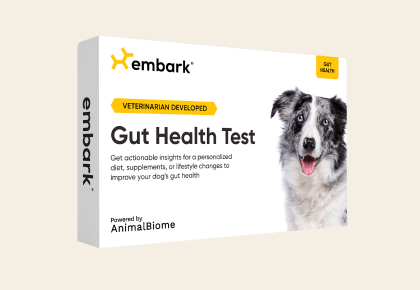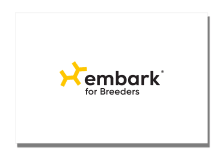Familial Nephropathy
Autosomal Recessive Hereditary Nephropathy (ARHN) is a progressive renal disease that is the result of glomerular basement membrane (GBM) defects that alter GBM structure and function in the mature kidney. Parts of the kidney act as a sieve where ions, small molecules like urea, and water are filtered out of the blood into the urine. In ARHN, the sieve is compromised and protein moves in the urine. This leads to muscle wasting, abnormal fluid accumulation in the skin and limbs, and kidney failure.
-
Signs and symptoms
Progression of the disease is typically rapid, and affected dogs may exhibit muscle wasting, abnormal accumulation of fluids in tissue (usually first observed as edema in the limbs), and excessive thirst and urination. PLN dogs are also at high risk of clotting problems due to a loss of clotting protein (Antithrombin III). End-stage renal disease may present with vomiting, poor appetite, and lethargy, and most often occurs at about 12 months of age but can occur as early as six months or as late as 24 months of age.
Affected dogs appear completely healthy as puppies, developing persistent protein in the urine (proteinuria) as the first symptom of the disease. The onset of proteinuria most often is between four to six months of age but can be as early as between two to three months or as late as between six to eight months of age. -
Diagnosis
Diagnosis is made based on clinical history, physical examination, laboratory values, and genetic testing. Proteinuria, increasing azotemia (BUN and/or creatinine), and possibly low blood protein may be noted. Additional tests, including blood pressure and abdominal ultrasound may be recommended based on a dog’s clinical signs.
-
Treatment
There is no cure for ARHN; all currently available treatments are symptomatic or supportive in nature. Current therapies are aimed at reducing the protein load on the kidney, fighting the toxic effects of protein wasting, maintaining hydration, and addressing an elevation in blood pressure, if present.
-
What to do if your dog is at risk
Actions
- Closely monitor your dog for changes in their drinking and urination patterns.
- Regular veterinary visits and laboratory testing will be vital to catching this disease at an early stage, where it can be more easily managed.
- Dietary and medication recommendations are based on how clinically advanced the PLN is. Follow your veterinarian’s recommendations.
- Dialysis, kidney transplants, and gene therapy are being explored as potential treatment options.
-
Genetic Information
It is important to note that Protein Losing Nephropathy (PLN) can be secondary to a variety of diseases. Even dogs without risk from this variant can develop PLN, and your veterinarian will need to rule out other causes of PLN with a series of diagnostic tests.
Hereditary Nephropathy is recessive, that is, a dog requires two copies of the variant to show signs of the disease from the variant. This variant was first described in the English Springer Spaniel.
Gene names:
COL4A4 Exon 30 ‐ chr
Inheritance type:
recessive
Citations:
-
Breeds affected
This health condition affects the following breeds
Learn about your dog’s unique genetic health
Dog owners
Breed identification, health and trait insights, personalized care recommendations, and the world’s first canine relative finder—all in one leading dog DNA test.
Learn about the report for dog ownersShop the test
Breeding programs
Embark’s test for breeding programs is one comprehensive DNA test designed with your needs in mind.
Learn about the report for breedersShop the test











